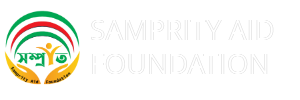Health and Rehabilitation
Disability is an umbrella term for impairments, activity limitations and participation restrictions. It is the interaction between individuals with a health condition (e.g. cerebral palsy, Down syndrome and depression) and personal and environmental factors (e.g. negative attitudes, inaccessible transportation and public buildings, and limited social support). Over a billion people are estimated to experience disability, corresponding to about 15% of the world’s population. The rates of disability are increasing in part due to ageing populations and an increase in chronic health conditions.
Disability is extremely diverse. While some health conditions associated with disability result in poor health and extensive health care needs, others do not. However, all people with disabilities have the same general health care needs as everyone else, and therefore need access to mainstream health care services.
To support people with disability and their families to meet basic needs and enhance their quality of life, WHO Western Pacific Regional Office provides guidance on community-based rehabilitation (CBR). CBR is a strategy for rehabilitation, equalization of opportunities, poverty reduction, and social inclusion of people with disabilities. It is implemented through the combined efforts of people with disabilities themselves, their families, organizations, and communities, as well as the relevant governmental and nongovernmental health, education, vocational, social, and other services. Support from the WHO Western Pacific Regional Office to Member States on CBR includes policy development and review, human resource capacity building, evaluation of services and support for direct implementation of activities.

